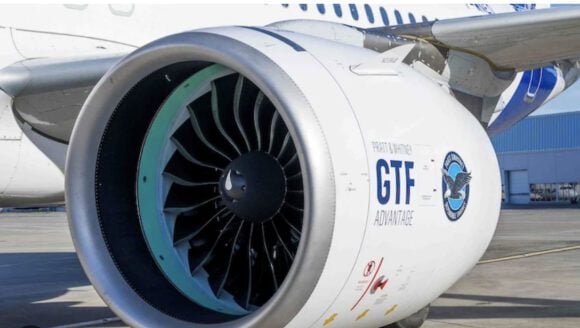[EDITED]
There is increasing attention on A320neo engines. The reason for this is the delay in Airbus doing deliveries of their initial A320neos powered by the P&W GTF. Qatar was supposed to take its first aircraft in December and then deferred this to 2016 – with no firm date provided. This was followed by IndiGo also deferring its first A320neos with GTF engines. IndiGo now appears ready for deliveries starting in March. Meanwhile Lion Air selected the LEAP for its 174 A320neos.
Lufthansa stepped in and took delivery of the first two A320neos in January in two quiet affairs.
Is there a problem with the P&W GTF? It depends how one defines the problem. If the engine is allowed to cool down, it cannot be re-started again too soon. A restarted engine has to run at idle for three minutes before moving to full throttle until software fixes are provided. Of course, this is an issue for an operator that wants to turn an aircraft quickly, if the engines have cooled. Most operators of the A320neo expect to turn their aircraft within an hour. (A review of 680,664 single isle flights indicates that 43% turn around in less than one hour. 27% in greater than five hours and approximately 4.1% turn around where there may be an issue with rotor bow 1.75 to 2.75 hours. It should be noted that all engines have rotor bow, however this was not identified as a problem on the GTF until late in the program.)
The news for P&W initially looks awkward. Airbus is now expected to fly its first A321neo to with CFM’s LEAP engine. Rumors we hear is this is also going to happen with the first A319neo.

P&W had been in the lead engine on the A320neo program. As the chart illustrates, through year end 2015, nearly three-quarters of the test flight hours had been achieved with the GTF engine.
To add to P&W’s challenges, competitor CFM told the media recently they are having no trouble with their LEAP engine.
P&W points out that their first customer, Lufthansa has two GTF powered aircraft in service. Lufthansa has had few glitches (four flight cancellations) on their A320neo. P&W are confident in their engine, which they point out, has been certified. In addition, they point out the cooling issue that came up is a “small fix” for which a software patch has been developed. They also note the engine has met all its targets promised to customers.
The A321neo powered by the GTF is set to fly with the engines originally planned to be delivered on the Qatar A320neo. Because the engines are now on a different aircraft, the engines have to be re-instrumented.
However, even as P&W works through the issues thrown up during the engine test flights and then prior to first delivery, it is worth noting some things.
- To the positive: The GTF has brought new high technology into an engine size not seen before. Despite all the testing, a few items slipped up that clearly caught P&W unexpectedly. P&W cannot escape this fumble. We understand the nature of the issue is really small and was, perhaps, not been explained well in the past. The new leadership is much more open and forthright about the issue. This a big change and appreciated.
- To their negative: The A320neo and engines were ordered some years ago when oil prices were over $100 per barrel. Currently oil prices are about $30 per barrel. The pressure to take deliveries is not as pressing now. Delaying deliveries can also be seen as a tactic by airlines (without naming anyone) to defer capital expenses as long as they can. Were the GTF truly a risky engine, Lufthansa would not have already taken delivery. P&W say they will have a solution in place in April.
The market between P&W and CFM is brutally competitive. The CFM engine is still working through its tests. The market share battle on neos shows undecided in the lead with 44% (1,942 aircraft) followed by CFM with 30% (1,309 aircraft) and P&W at 26% (1,163 aircraft). With a high percentage of orders undecided, the battle is by no means over, and is likely to continue throughout the life of the program. Each manufacturer has a substantial backlog, and will be fighting hard for undecided customers.
P&W had a good airshow in Singapore last week. They announced VietJet on A320neo and their sole sourced customers, Bombardier and Mitsubishi, announced orders. Senior leadership at P&W Bob Leduc and Greg Gernhardt answered all questions that still seemed unanswered by the press regarding the status of the GTF engine. Here is an article reflecting the responses from the P&W leadership to the media questions.
Views: 4





Sorry to have to correct you, but Airbus already did fly the first A321neo, with LEAP-1A engines installed. The first A321neo flight was on February 9.
OK – story written some time ago and not posted.